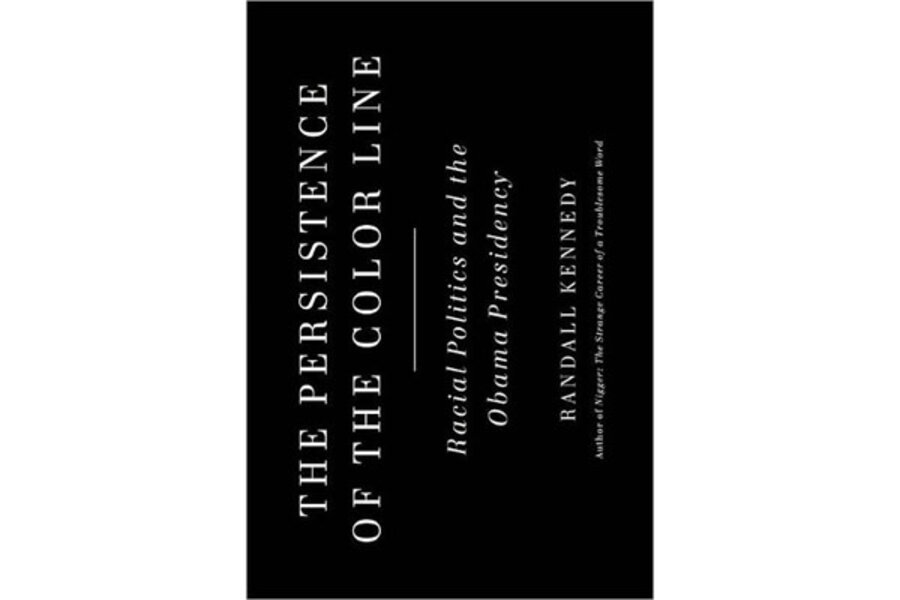The Persistence of the Color Line: Racial Politics and the Obama Presidency
Loading...
In 2007 and 2008, most Americans probably learned about the presidential campaign through the media. A little TV, some Internet, maybe newspapers and magazines. There was certainly plenty of coverage – not to mention plenty to say. As readers remember, the candidacies of Hillary Clinton and Barack Obama provoked a nationwide conversation about gender and race.
But a very, very small segment of the population was at Harvard Law School during 2007 and 2008, taking Randall Kennedy’s class on the campaign. Kennedy is not only a legal scholar but the author of several books on race and racism, including “Nigger: The Strange Career of a Troublesome Word,” and “Race, Crime, and the Law.” As such, Kennedy’s students had the additional benefit of their professor’s scholarly and historical perspective – and now you can, too.
In The Persistence of the Color Line: Racial Politics and the Obama Presidency, Kennedy helpfully compiles and interprets the public conversation around Obama’s 2008 election and his nomination of Sonia Sotomayor to the Supreme Court. He references New York Times’ op-eds, blog posts, blog comments, song lyrics, Congressional outbursts, court cases, radio talk show hosts, poems, political ads, Gallup polls, sermons, books, articles, speeches, off-the-record remarks, and lots and lots of history. (Indeed, on some pages the footnotes are almost as long as the text.) Kennedy uses these cultural artifacts to consider whether President Obama’s election means that the United States is post-racial.
Kennedy’s answer – which he articulates in the first sentence of the book – is no. Kennedy writes, “The terms under which Barack Obama won the presidency, the conditions under which he governs, and the circumstances under which he seeks reelection all display the haunting persistence of the color line.” Guided by this thesis, subsequent chapters consider how race (and sometimes gender) factored into blacks’ response to Obama, whites’ response to Obama, and the president’s own rhetoric.
Regarding the black community, Kennedy posits that Obama walked “the tightrope between being black enough but not too black.” He cites comments in The New Republic, AfroChat.net, and New York magazine that indicate Obama’s dark-skinned, African-American wife won him particular goodwill among many in the black community. For these contributors, the president’s mate was a sign of his commitment to his black identity. On the other hand, Kennedy suggests that Obama’s elusive stance on affirmative action made many blacks suspect the president’s commitment to racial fairness.
Nevertheless, Kennedy recognizes Obama’s overwhelming popularity among most African Americans. He credits their enthusiasm to “the magnetism of success,” as well as to neediness: “Blacks are so used to being neglected, if not mistreated, that they often tend to exaggerate the virtues of authorities that treat them with even a modicum of respect.”
Kennedy’s assessment of the white community’s response is also skeptical. Kennedy surmises from an anecdote Obama tells in his own book, “The Audacity of Hope,” that the president took care to make whites feel less white. Kennedy also points out that in Obama’s well-known race speech the president uses the passive voice – simultaneously acknowledging slavery and Jim Crow while obscuring enslavers and Jim Crowers. As a result of Obama’s careful expression,
Kennedy hypothesizes that many whites were grateful, or at least confident that Obama did not resent them. Ultimately Kennedy suggests that Obama did not so much overcome whites’ racial resistance as neutralize it.
In his final chapter, Kennedy offers several conclusions: that race still matters, but it is sometimes an asset; that black candidates, voters, and officials are likely to remain a force, especially in the Democratic party; and that, at the very least, Obama’s presidency has effectively demonstrated that a person of color can responsively govern.
These conclusions are not earth-shattering, but they are useful points of reflection. The same might be said for “Persistence” as a whole. By adapting his lectures and harnessing some of the national chatter, Kennedy has created a valuable historical document – both for those of us who lived through the 2008 election and would welcome a more academic perspective on it, and for those who one day will look back on that time and wonder what people were talking about.
Kelly Nuxoll is a Monitor contributor.






